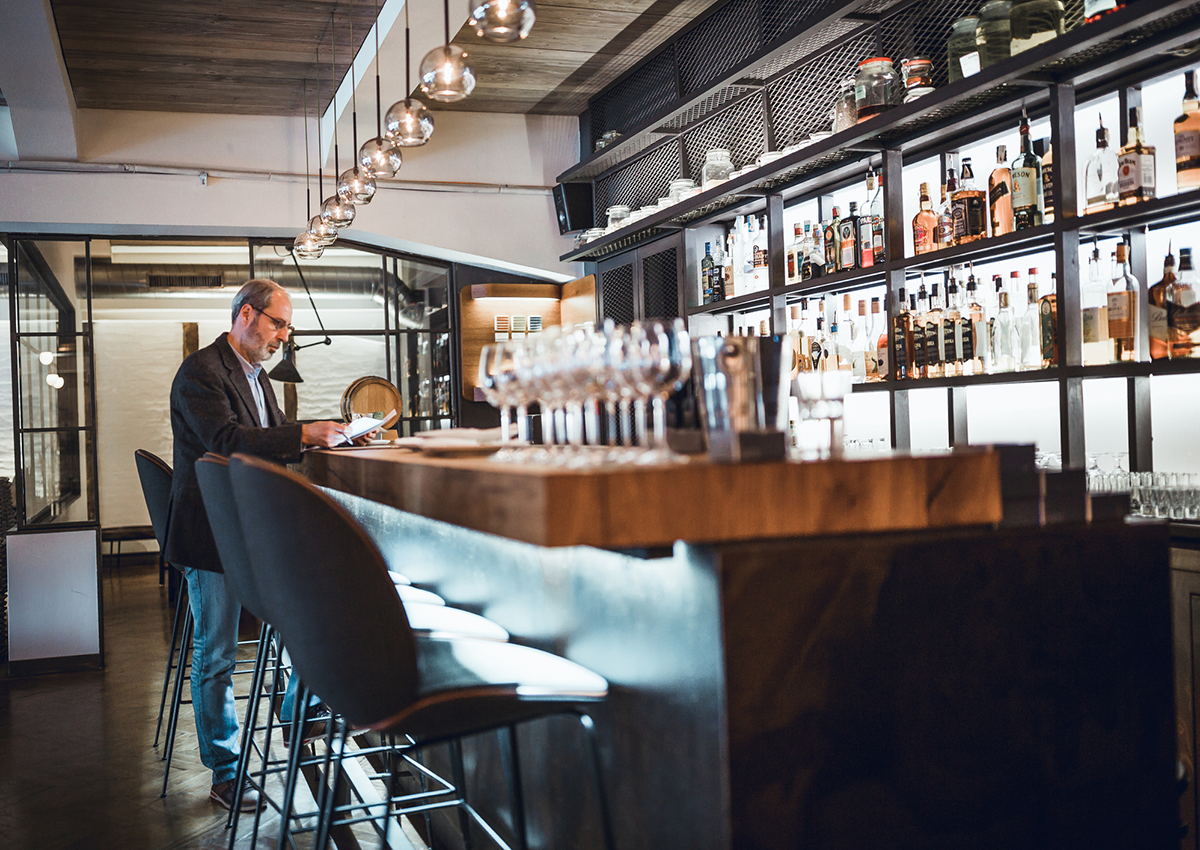Modern POS systems are changing the game for many in the bar industry, allowing owners and managers to streamline operations and increase profitability. These systems are made specifically for use in the service industry and offer features that can take the weight off your shoulders so you can get back to your customers.
However, others aren’t so sure these systems can live up to the hype. Many misconceptions exist about what these programs can and can’t do. For some, investing in a new system isn’t worth the risk without concrete evidence that it can improve day-to-day operations behind the bar.
Today, we’re dispelling the myths surrounding modern cloud-based POS systems to help you find clarity as you weigh your options.
We’ll cover:
Myth #1: “POS systems are too expensive for my bar”
There’s no denying the fact that updating your bar’s POS system will cost you money upfront. Depending on your current setup, you may need new hardware, including tablets for your front-of-house staff, kitchen display systems, and ticket printers. If you’re going the distance, you might even be considering self-service kiosks and other add-ons.
However, the myth that modern POS systems are too pricey for small bars often stems from folks who aren’t calculating the return on their investment. To decide whether a POS system is worth the cost, you’ll need to understand many ways these programs can streamline your bar management.
State-of-the-art cloud-based systems offer way more tools than your old-school cash register or even slightly outdated POS products. Intuitive technology and effortless integrations mean your bar POS system also serves as inventory management software, an employee scheduling program, and a database of comprehensive performance metrics.
A great POS system can offer meaningful data about your establishment to help you see where you’re losing money and how you can increase your profitability.
Here’s how to easily calculate your return on investment (ROI):
ROI = (net profit/investment) x 100
Let’s say you invest in a new POS system that includes bar inventory management software to track every item coming in and going out. You also opt for solutions to support seamless online ordering and employee shift scheduling.
The wealth of data this new system supplies allows you to cross-reference your actual inventory with your hypothetical inventory. This shows you that two of the drinks on your menu are frequently overpoured, resulting in shrinkage. It also highlights several bartenders who tend to offer heavy pours.
After correcting your menu and implementing training measures with your staff, you’re able to mitigate wasted product. Along with increased sales through online orders and an optimized staff schedule, your new bar POS system might pay for itself in only a couple of months.
You should feel like your POS system is worth its weight in gold. If it isn’t making your life easier, it’s probably time to find a solution that will. Through a combination of thorough analytics, highly personalized marketing tactics, and advanced technology, your POS system should make it easy to see your bar’s shortcomings and deliver solutions to resolve them.
If you’re still unsure whether your investment will be worthwhile, you can inquire about the many financing options available.
Myth #2: “POS systems are complicated and time-consuming to use”
While there’s bound to be a learning curve when you implement any new software, increased efficiency and ease of use are some of the biggest selling points of innovative bar POS systems. Once you get over the initial adjustment period, you can expect these programs to streamline your bar management and save you time.
To assist you along the way, reputable POS companies will provide substantial training and plenty of resources to help you navigate the change to a new system. Additionally, you should have access to on-call 24/7 support, so you always have assistance when you need it.
Of course, adopting any new approach can be intimidating, especially when you’ve gotten comfortable with your existing system. However, modern interfaces prioritize speed and simplicity for both customer-facing roles and those behind the scenes. They should be intuitive, even for users with minimal technical experience.
If you’re still using a legacy POS system, your servers must write down or remember orders and wait for other staff members to input their orders into the central terminal. Bars and restaurants that still use handwritten tickets–which can be hard to read and easy to misplace–are even farther behind.
In both situations, there’s too much room for error.
But what if your servers and bartenders could place orders right at the table using a handheld tablet? You wouldn’t have a line of servers waiting to input orders, you could reduce your turnaround time, and you’d cut down on errors that cost time and money. All these factors result in happier customers who are more likely to return.
Check out how Pacific Sushi used tableside ordering to increase revenue by 25%. Then, imagine the results of investing in a state-of-the-art, cloud-based POS system for your bar. Sure, you and your staff will need to adjust to new technology, but it could revolutionize your bar management.
Myth #3: “My old cash register works fine – I don’t need a POS”
Your old-school cash register does one thing–process sales transactions. While they can be accurate, their reliance on manual input makes them inherently error-prone. Even when your staff uses them flawlessly, they provide a very limited data set. You can see the money in and the money out, but that’s it. This makes it hard to track revenue and sales data accurately.
On the other hand, all-in-one bar management software can track and monitor a massive amount of information. Highly detailed reports can help you identify sales trends and gain a deeper understanding of your metrics.
You can also integrate your POS software with your inventory management system so you always know how much of each item you have in stock. This makes it easier to place orders without the risk of over- or under-estimating your needs. Data-driven decision-making can help you order with confidence and reduce waste.
All this information can even help streamline your scheduling process. You can use historical records to inform your staffing decisions so you always have the right people on duty when you need them.
The information doesn’t stop with your bar’s efficiency behind the scenes, though. It extends to your customers in ways you might not expect. By utilizing loyalty programs through your POS system, you can encourage customer retention and increase engagement. Built-in guest management software allows you to store important information about your customers, such as allergies, menu preferences, and special requests. They’ll feel like royalty every time you anticipate their needs.
You might not realize just how much your clunky old system is slowing you down. However, switching to a POS system from a cash register can make all the difference for your bar. Take the case of The Japanese Tea Garden in San Francisco, for example. By streamlining the ordering process with a top-of-the-line POS system, owner Tak Matsuba managed to cut lines in half and increase his servers’ tips by 50%.
We’d like to see a cash register try delivering those kinds of results!
Myth #4: “POS systems are a security risk”
Security concerns are understandable for bar managers and owners, especially when handling customers’ sensitive credit card information. However, modern bar POS systems utilize the highest degree of protection to minimize security risks and ensure this information is protected.
It all starts with encrypting your data. Encryption uses a complex algorithm to scramble ordinary text into ciphertext, which is impossible to translate without the appropriate key. This protects a user’s privacy, enables secure file sharing, and allows us to safely transmit data from a credit card machine to a bank’s servers. Cloud-based POS systems use constant encryption to ensure confidential information doesn’t slip into the wrong hands.
Reputable POS providers use secure cloud solutions to store your data. You no longer need vulnerable on-site servers. Instead, data is automatically uploaded and backed up to the cloud.
Of course, you’ll still need to do your part to safeguard sensitive data. Every bar and restaurant that accepts credit card transactions must comply with the Payment Card Industry Data Security Standard (PCI-DSS). These standards include tasks like using up-to-date antivirus software, updating default passwords, and ensuring every person accessing your system has a unique user ID.
When you level up to a modern POS system, your vendor can (and should) help walk you through the steps required to protect your customers’ data.
It’s worth noting that a drawer full of paperwork isn’t impenetrable, either. While adopting a cloud-based system can be intimidating, you aren’t doing yourself or your customers any favors by using antiquated record-keeping systems.
Myth #5: “Switching to a POS will disrupt my business”
As we’ve mentioned, there will be a learning curve for any new system your business adopts, but this doesn’t have to mean interruptions to your day-to-day operations.
Great bar POS systems should include in-depth training to help you and your staff grasp the ins and outs of your updated hardware and software. Whether you’re transitioning to a cloud-based POS from a legacy system or a cash register, you should have access to 24/7 support and resources to troubleshoot issues on your own.
Once you’ve introduced the new system, you’ll want to phase the implementation process over a period of time to allow your staff to adjust to the technology. For example, it might be best to wait and introduce integrations like online ordering when everyone’s gotten the hang of the basic system.
The time it takes to fully adopt your new system will depend on several factors, two of the most notable being the size and complexity of your business. Of course, a small boutique cocktail bar with a handful of employees will take less time to acclimate than a large chain of high-volume establishments.
Remember to account for time to input important information like inventory, menu items with detailed ingredients, modifiers, and more. After all, this is how you can make the most of your new POS software–when your system includes all the relevant data, you can use it to monitor inventory, price out your menu, and much more.
One of the best elements of a great POS system is the ability to scale with your business and grow alongside your enterprise. Small, family-owned bars should get the same benefits from their POS as international brands. If and when you choose to expand, your easy-to-use bar POS system will be along for the ride.
Conclusion
Before you choose a POS and bar management system, you’ll need to consider which features are most important and how you plan to utilize modern integrations. It’s also critical to take stock of your current operation to identify which areas need the most improvement. Remember, upgrading to a cloud-based POS system is an investment in the future of your establishment. Set the bar high and future proof your technology to maximize our success with CAKE POS.







